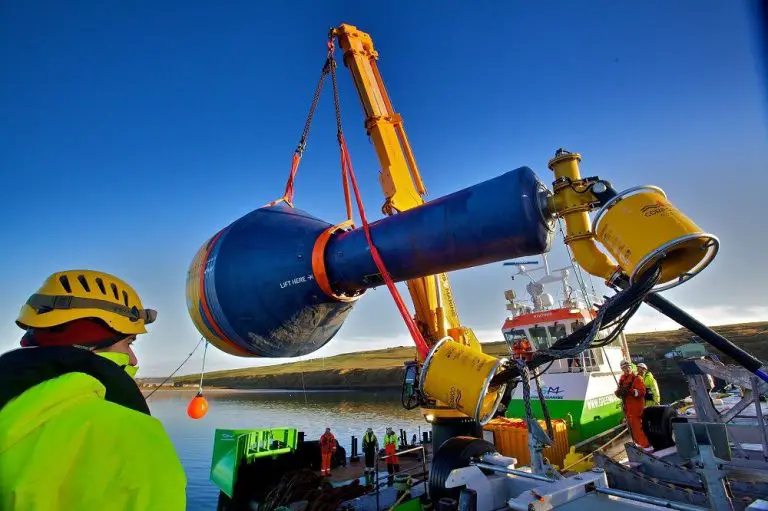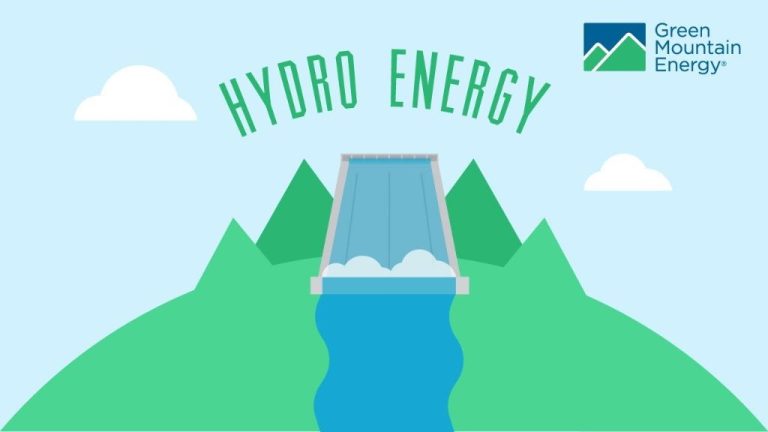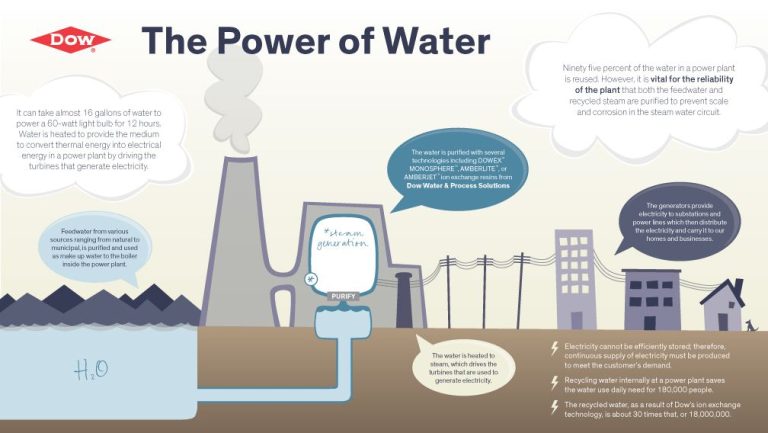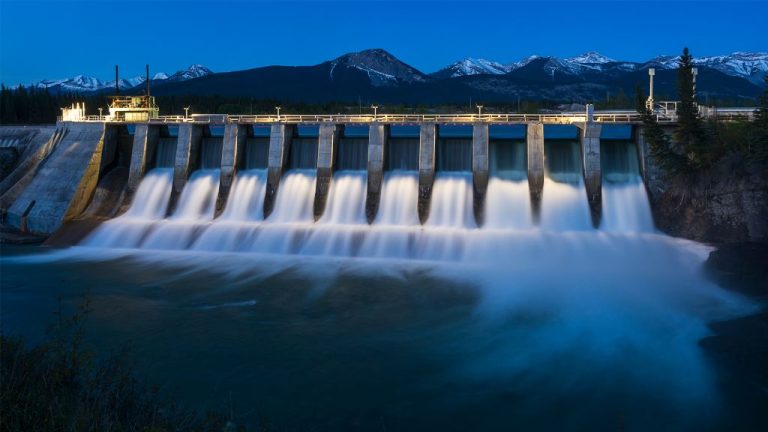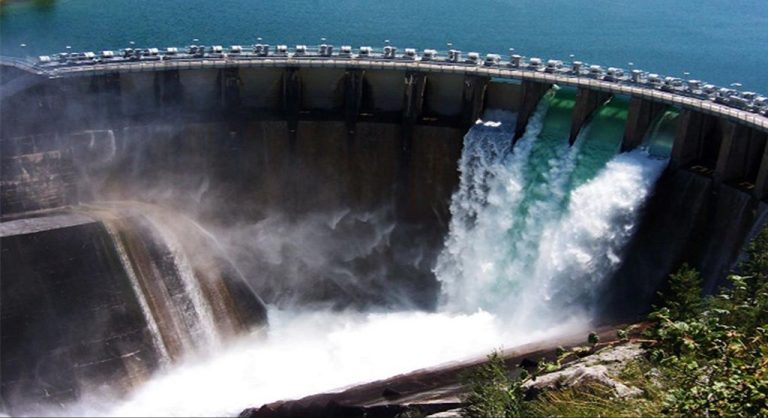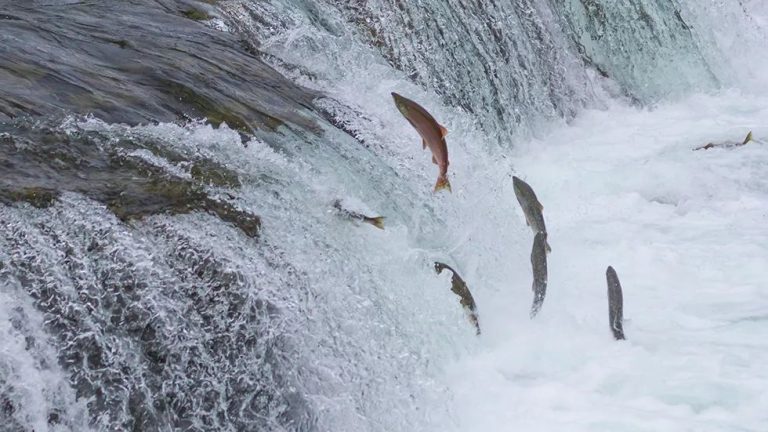What Is The Original Source Of Energy For Hydropower?
Hydropower is one of the most important renewable energy sources in the world today. It currently provides around 16% of the world’s electricity from facilities in over 150 countries. As a clean form of energy that relies on the water cycle, hydropower offers a sustainable way to generate electricity without emitting greenhouse gases or other pollutants.
Hydropower works by utilizing flowing water to spin turbines connected to generators that produce electricity. The kinetic energy from the flowing water gets converted into electrical energy that can be distributed via power grids. The original source of energy for hydropower is gravity from the water cycle set in motion by the sun’s heat.
In this article, we will take a closer look at how hydropower taps into the renewable power of water to create electricity for homes and businesses around the world.
What is Hydropower?
Hydropower is a form of renewable energy that harnesses the power of moving water to generate electricity. It uses the force of gravity and the kinetic energy of flowing or falling water to spin turbines, which in turn drive generators to produce electricity. Essentially, hydropower converts the natural flow of water into a valuable source of clean and sustainable energy.
The most common type of hydropower plant uses a dam on a river to store water in a reservoir. The water is released from the reservoir through turbines to generate electricity. The height of the dam creates hydraulic head, or downward force, to spin the turbine blades faster. The more hydraulic head and water flow, the more electricity can be generated.
Hydropower is considered renewable because it relies on the Earth’s continuous natural water cycle, which is constantly renewed by solar energy. As long as water cycles through the planet, hydropower can be harnessed as a clean energy source.
History of Hydropower
Hydropower has been used for centuries to harness the energy of flowing water for useful purposes like grinding grain, powering machinery, and generating electricity. Some of the earliest uses of hydropower date back thousands of years to ancient civilizations that utilized water wheels to grind grains like wheat and corn. The Greeks were among the first to use water wheels for industrial activities in the 3rd century BC. Hydropower was also widely used throughout the Roman Empire, the Middle East, and ancient China.
In the early Middle Ages, hydropower remained an essential source of mechanical power in Europe, being used in sawmills, textile mills, and for blacksmithing. Monasteries built water wheels along rivers to help power their daily operations. By the 19th century, hydropower played a major role in the Industrial Revolution, providing an efficient and reliable way to power factories and mills. The use of hydropower plants to generate electricity also emerged in the late 19th century, with the first hydroelectric power plant built on the Fox River in Wisconsin in 1882. Since then, hydropower has continued to be a major renewable energy source worldwide.
The Water Cycle
The water cycle is the continuous movement of water throughout the earth and atmosphere. It is a closed-loop system, meaning the water is constantly being recycled. The main stages of the water cycle are evaporation, condensation, precipitation, and collection. The energy from the sun causes water in oceans, lakes, rivers, and other sources to evaporate and turn into water vapor. As the water vapor rises into the atmosphere, it cools and condenses back into liquid water in the form of clouds. The water in the clouds falls back to earth as precipitation in the form of rain, snow, hail, etc. Some of the precipitation collects in oceans, lakes, rivers and is available for evaporation again. Some of it soaks into the ground and becomes groundwater. The continuous cycling of water between land, atmosphere, and ocean driven by solar energy is essential for hydropower generation. The water source for hydropower facilities must be continuously replenished through this natural cycle.
Gravity
Gravity is the force that enables hydropower generation. As water flows downhill due to gravity, it gains kinetic energy. This kinetic energy contained in falling water is converted into mechanical energy by hydropower turbines. The turbines are coupled with electric generators which convert the mechanical rotation into electrical energy.
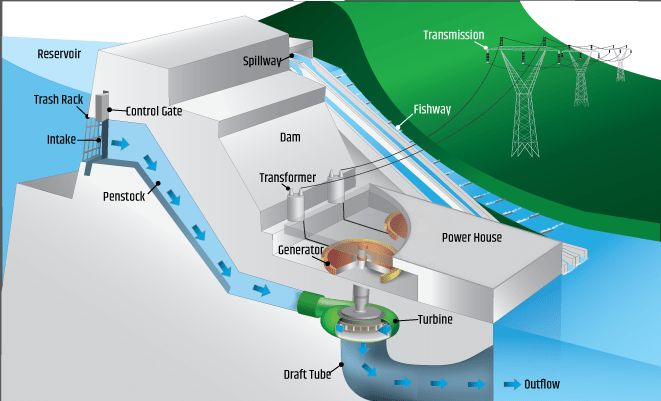
The role of gravity in hydropower generation starts with the water cycle. As water evaporates from the oceans, lakes, and rivers, it eventually condenses and falls back to Earth as precipitation. The gravitational force pulls the water downward from high elevations to lower elevations. This creates an elevated reservoir of potential energy.
Dams are constructed to capture and contain water at an elevated level. When the water is released from the reservoir through intake gates, gravity accelerates the water downhill through penstocks and pipes. The rushing water turns the blades of the turbines at high speeds. The greater the vertical distance or “head” that the water falls, the more gravitational potential energy is converted into kinetic energy for electricity generation.
Without the downward force of gravity pulling water from high elevation sources to lower elevations, hydropower plants would not be able to produce electricity. Gravity is the original source of energy that gets converted into the renewable power generated at hydropower facilities.
Kinetic Energy
The key to understanding hydropower is the concept of kinetic energy. Kinetic energy is the energy of motion that an object possesses due to its velocity. In the case of hydropower, it is the kinetic energy of falling or flowing water that allows it to be converted into electricity.
As water flows through a river or stream, it carries kinetic energy in the form of its movement and speed. The faster the water flows, the more kinetic energy it possesses. Dams are built to harvest this energy potential by forcing large volumes of water to flow through turbines.
The moving water contains kinetic energy that pushes against the turbine blades, causing them to spin. This rotational motion turns a shaft inside the hydroelectric generator, creating an electromotive force which pushes electrons and generates electricity. So in essence, the kinetic energy of the moving water gets converted into the rotational kinetic energy of the spinning turbine, which gets converted into electrical energy by the generator.
This demonstrates how harnessing the natural kinetic energy of moving water and converting it into electricity is the fundamental principle behind hydropower generation. The key is capturing the motion of the water and transforming its kinetic energy into usable electrical power.
Dams
Dams are a critical component of most hydropower plants. They serve to control and harness the kinetic energy inherent in flowing water. Dams are constructed across rivers or streams to create reservoirs, which allow water to be stored at higher elevations. This creates hydraulic head, or the difference in elevation between the water source and water turbines.
The dam wall itself acts as a barrier that stops and collects water in the reservoir. Gates in the dam called spillways can regulate water flow and allow excess water to be released downstream. Dams may be made of concrete, rockfill, earth, masonry, or wood. One of the largest hydropower dams is the Three Gorges Dam in China, which spans over 1.4 miles and rises to a height of 600 feet.
The placement of dams and creation of reservoirs serves several purposes for hydropower generation. First, it allows the timing and amount of water flow to be controlled, rather than relying solely on natural streamflow. Water can be stored in reservoirs during times of high rainfall and runoff, then released as needed to generate electricity. Second, the change in elevation creates hydraulic head and water pressure that is directed through the dam’s water intakes and penstocks down to the turbines. Overall, dams provide the critical water storage, flow control, and hydraulic head that enables hydropower utilization.
Turbines
Turbines are the key component of hydropower plants that actually convert the kinetic energy of falling water into electrical energy. A turbine is a rotary engine that converts the kinetic energy of a moving fluid into mechanical energy.
Hydro turbines have a spinning rotor with blades or buckets that water flows over or through. The moving water strikes the turbine blades and causes the rotor to spin. The spinning rotor turns an electrical generator that converts the mechanical energy into electrical energy through electromagnetic induction.
There are two main types of hydro turbines – impulse and reaction. Impulse turbines rely on the velocity of water to move the runner and discharges water at atmospheric pressure. Reaction turbines rely on the combined action of pressure and moving water. Most hydropower plants use reaction turbines as they are more efficient and allow water pressure to be captured as well.
The most common types of reaction turbine are the propeller turbine and Kaplan turbine. In these, the runner has 3 to 6 blades and water flows through the turbine in a radial direction. The pitch and angle of the blades can be adjusted to maximize efficiency. Francis turbines are also commonly used reaction turbines but the water flows through the turbine axially or parallel to the rotor shaft, instead of radially.
Regardless of the exact type, the basic principle is the same. The moving water strikes the specially designed blades which converts the kinetic energy into rotational mechanical energy. This spins the rotor which then spins magnets past stationary coiled wires to generate electricity through electromagnetic induction. In this way, the natural potential energy of water is converted into clean, renewable electricity.
Generators
Generators are the final step in the hydropower process that actually produce the electricity. They work by converting the mechanical rotational energy from the turbine into electrical energy through electromagnetic induction.
Generators contain magnets that rotate around wire coils. As the magnets spin past the coils, they create a changing magnetic field that induces a voltage or electrical current in the wires. This generated voltage pushes electrons through the wires to produce an electric current.
The faster the magnets spin inside the generator, the greater the electrical output will be. The power output is directly proportional to the speed and voltage generated. Large hydropower dams can utilize enormous generators capable of producing hundreds of megawatts of electricity.
The generators send the electricity they produce into transformers located in the dam. These transformers increase the voltage so the current can travel long distances through transmission lines with minimal losses. This allows the hydropower electricity generated at dams to be distributed across widespread electrical grids.
In summary, generators are essential components that allow the kinetic energy of water turbines to be converted into usable electricity for homes, businesses, and industries.
Conclusion
In summary, the original source of energy for hydropower is the sun. The sun provides the energy to power the water cycle, evaporation and precipitation, that gives water mobility to flow downhill. Gravity then acts on the water to accelerate its downhill movement, generating kinetic energy. Hydropower dams and generators simply convert the kinetic energy of moving water, which finds its origins in solar energy, into usable electricity. While hydropower relies on advanced technology and infrastructure, without the sun’s energy contribution there would be no potential or kinetic energy for dams to exploit in the first place. The true original source is solar radiation that made the water cycle and gravity-driven flow of rivers possible.

